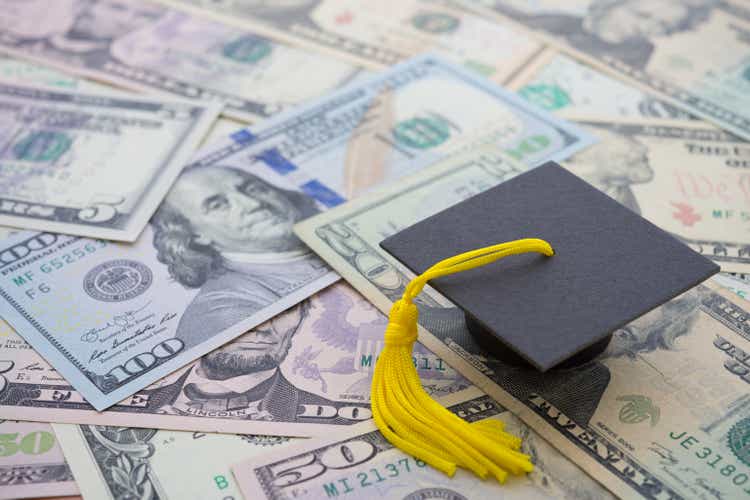Pla2na/iStock via Getty Images
Millions of Americans will start making payments again on their federal student loans, after a pandemic-era pause for over three years ended on Sunday, fanning concerns of the spillover effects on the U.S. economy.
Interest began accruing on loans again on September 1 and payments came due starting Sunday.
More than 40M people together owe over $1.6T in federal student loan debt. The impact of the payment resumption on households and the economy remains uncertain, on account of the unprecedented long break.
“To our knowledge, there has never been a circumstance in which an entire lending market was turned off and turned back on again,” said Jefferies analyst John Hecht.
“The resumption will lead to higher delinquencies and net charge-offs, in addition to increased loan demand,” he said, adding that loan origination volumes may be subdued as lenders remain cautious amid recession concerns and normalizing credit trends.
The payment resumption could lower consumer spending by $9B per month, or $27B per quarter in nominal terms, according to Oxford Economics. This may reduce 2023 GDP growth to 1.7%, and result in a 0.3% decline in 2024.
While the Supreme Court blocked President Joe Biden’s student loan forgiveness plan, the White House had announced an income-driven repayment Federal Student Aid aimed at low-income households.
“We continue to expect administration policies will blunt the impact of repayments,” said BTIG’s Isaac Boltansky.
Stocks to watch: Student loan-related stocks such as SoFi Technologies (NASDAQ:SOFI), Navient (NASDAQ:NAVI), Nelnet (NYSE:NNI) and SLM Corp. (NASDAQ:SLM).
Discretionary spending is widely expected to take a major hit. BTIG said results of retailers and restaurateurs will be affected, while UBS said soft goods sales will likely decline.
More on student loans
Credit: Source link




